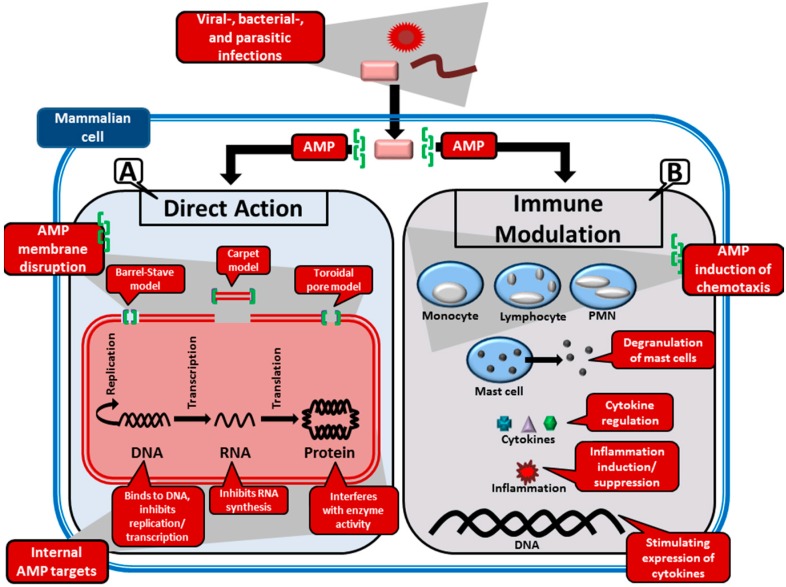Figure 2.
Main antimicrobial mechanisms of AMPs during the infection of a mammalian host cell. (A) The direct microbial action of AMPs involves the binding of these peptides to the microbial membrane/capsid, resulting in the infectious agent’s neutralization. There are three models proposed for this action: (i) the barrel-stave model, where the AMPs embed themselves into the membrane to form pores; (ii) the carpet model, which proposes that small portions of the membrane be removed by AMPs; and (iii) the toroidal model, which is similar to the barrel-stave model, but with the exception that the AMPs are permanently bound to the phospholipids in the membrane. Internal functions of AMPs may include DNA replication/translation inhibition, transcription inhibition and enzyme inhibition; (B) Many AMPs are also involved in immunoregulation. Some of these regulatory functions may include angiogenesis, cell proliferation, cytokine regulation, chemotaxis of certain leukocyte classes (including monocytes, lymphocytes and polymorphonuclear leukocytes or PMN), degranulation of mast cells, stimulation of phagocytosis and even modulation of gene expression.

